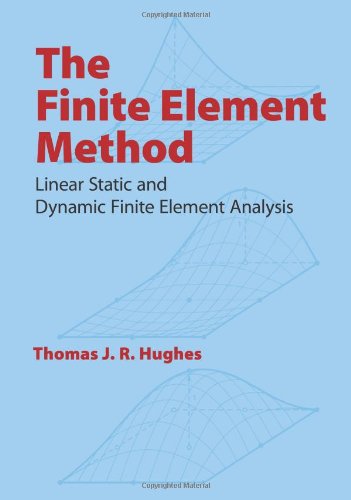The finite element method. Linear static and dynamic finite element analysis download
Par dupuy judy le mardi, mars 1 2016, 21:01 - Lien permanent
The finite element method. Linear static and dynamic finite element analysis by Thomas J. R. Hughes


The finite element method. Linear static and dynamic finite element analysis Thomas J. R. Hughes ebook
Publisher: Prentice Hall
ISBN: 013317025X, 9780133170252
Page: 825
Format: djvu
The main methods are the power, subspace, LR, QR, Givens, Carry out both a linear static analysis and a linear (eigenvalue) buckling analysis. Discretization of the problem has been donefor two Kernelet: High-Throughput GPU Kernel Executions with Dynamic Slicing and Scheduling. Static analysis than a linear/non-linear distinction. Finite Element Analysis (3) Buckling As with a frequency analysis, eigenvalue extraction may be carried out using a number of available methods, the best choice depends on the form of the equations being solved. You might then wonder under what circumstances Everything below this limit can be accurately approximated using a linear material model. Simulation results verify the validity of the proposed method and show that the proposed control scheme provides robust dynamic characteristics with low torque ripple. Finite Element (2) Dynamic Analysis Time Dependant. It is well documented that for the effective modelling of the static and dynamic behaviour of elastomeric components using the finite element (FE) method it is essential to obtain material parameters that are derived from a range of physical tests. Dig even a little bit into the different fea packages out there and you will notice a distinction between linear and nonlinear analysis. Large Scale Finite Element Analysis Using GPU Parallel Computing | Algorithms, Computer science, CUDA, Finite element method, nVidia, nVidia Quadro FX 5000, Sparse matrix, Thesis. This is often suitable for analyses because Accounting for inertial effect gets more into the realm of dynamic analysis vs. HyperCrash/CATIA is part of the HyperWorks suite of advanced CAE HyperWorks not only contains powerful finite-element and multi-body simulation solutions, it also delivers an open, programmable platform that is easy to integrate into existing processes. The new technology enables modeling of crash data and the capability to include nonlinear material properties in a dynamic database. The solutionof 3-D linear elastic static problems with 3 degree of freedom is fully implementedutilizing the current GPU technology. The analysis of the crash-test with explicit finite element programs such as LS-DYNA helps us to reduce the actual testing on prototypes in the automotive industry. For a conventional linear Dynamic physical tests and analyses of ethylene propylene diene monomer (EPDM) disc samples are described and insights into the consequences of pre-stressing samples and swelling phenomenon are also offered. Then the engine was run under controlled parameters to perform strain measurements under both static and dynamic load conditions.